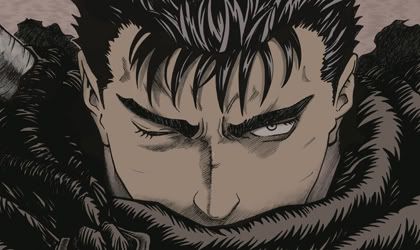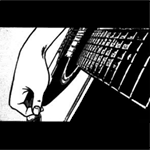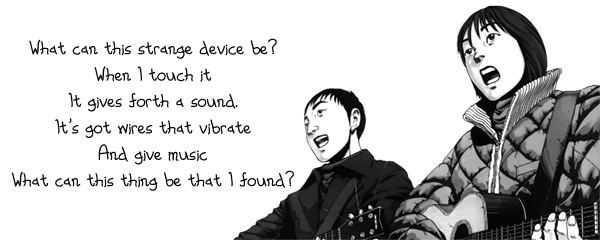... και το spam συνεχίζει να πέφτει σύννεφο.

Έλεγα να απέχω από το thread, μιας και υπάρχει ήδη ένας εκπρόσωπος, φωνή-της-λογικής (L), αλλά δεν αντέχω τόση βλακεία συσσωρευμένη.
Εγώ δε κάθομαι να το σκεφτώ τόσο πολύ όταν βλέπω κάτι. Αν μου αρέσει κάτι οπτικοακουστικά, θα κάτσω να το δω. Δε θα κάτσω να σκεφτώ αν είναι αντιγραφή ή με κοροϊδεύουν για να βγάλουν λεφτά ή το ένα ή το άλλο. Θα κάτσω να διασκεδάσω με αυτό που βλέπω. Αφού περνάω καλά δεν έχει νόημα να χαλάσω τη διάθεση μου.
Δεν θέλω να σε προσβάλω, αλλά
αυτός ακριβώς είναι ο λόγος που εξακολουθείς να βρίσκεις ποιοτικές τις δουλειές της Disney. Ειδικά αυτές των τελευταίων 15 ετών. Για πολλούς εδώ μέσα η οπτικοακουστική απόλαυση δεν είναι το παν. Γι' αυτό μην τσατίζεσαι που τρως κράξιμο.
Και, plz, μην αποκαλείς σατανιστικό οτιδήποτε τολμάει να θίξει real life προβλήματα. It's old. It's lame.
It's sad.Επίσης αυτοί που πρωτοσχεδίασαν τον θρυλικό βασιλιά τον λιονταριών, ας το έκαναν καλύτερο από της Disney, για να έβγαζαν εκείνοι δισεκατομμύρια. Δε τους εμπόδισε κανείς. HAKUNA MATATA
OK, τι στο καλό εννοείς εδώ; Ότι θα έπρεπε να στοχεύσουν στα έσοδα, και όχι στην πιστή απόδωση της ιστορίας; Ότι εσύ κρινεις την ποιότητα ενός έργου βάσει της εισπρακτικής του επιτυχίας; Βοήθησε με λίγο, ειλικρινά δεν μπορώ να καταλάβω πως σκέφτεσαι.
αν δεν υπήρχε ντίσνευ ούτε άνιμε θα υπήρχε
μάθε και λίγο ιστορία και μην μιλάς με στερεότυπα
η ντίσνευ έβγαλε έργα τέχνης,ανεξαρτήτως είδους
το snow white είναι από τα καλύτερα films όλων των εποχών,animation or not
Εσύ με απογοητεύεις διπλά γιατί μου είχες δώσει την εντύπωση ότι είσαι διαβασμένος. Ανάγωγος και ερειστικός μεν, αλλά τουλάχιστον ενημερωμένος σε θέματα animation.
Και τώρα έρχεσαι και μας λες ότι χρωστάμε τα πάντα στη Disney. O RLY.

Βασικά, αν δεν υπήρχαν οι Eadweard Muybridge, Georges Melies, James Stuart Blackton και Emile Cohl, δεν θα υπήρχε
καθόλου animation. Ούτε anime, ούτε Disney, ούτε τίποτα. Όλοι οι animators πάνω στους ώμους αυτών στηρίχθηκαν. Αυτοί ήταν οι πραγματικοί πρωτοπόροι.
Από κει και πέρα, η ιστορία είναι, όπως σε όλες τις τέχνες, "ο κλέψας του κλέψαντος". Χιλιοπαιγμένο σενάριο. Αλλά δεν ισχύει ότι οι ιάπωνες μονάχα να αντιγράφουν τεχνικές από τους αμερικάνους ξέρουν, και ότι δεν προσφέρουν τίποτα στο χώρο του animation, όπως υπαινίσσεσαι. Ας πάρουμε σαν παράδειγμα το Production I.G, ένα από τα πιο αγαπημένα μου ιαπωνικά animation studios. Δες τι έχει προσφέρει μόνο αυτό στο χώρο:
Innovations
Production I.G is one of the forerunners of digital animation techniques. While not exclusive in their usage of computer technology, they are given praise for their advances in digital compositing, digital effects, digital image/story boarding, and digital colorgrading. Because of this, some prefer to refer to Production I.G as an 'animation lab' rather than a studio.
The film "Ghost in the Shell" marked the first ever overlay of computer generated visuals onto a hand drawn background. Surprisingly, many of the digital looking effects in the film were laboriously hand produced.
Production I.G's advances in digital cinematography techniques have been credited in no small part to Effects Director Hisashi Ezura (江面久), Director Hiroyuki Kitakubo (北久保 弘之), Animator Norifumi Kiyozumi (清積紀文) and Toshihiro Kawamoto (川元 利浩) who joined Production I.G in the spring of 1996. Their first application of digital techniques was presented in the animated cut sequences for the Sony PlayStation game, "Ghost in the Shell".
The first feature length animated film to use this digital manipulation by Production I.G was "Blood: The Last Vampire" released in 2000. This found the comprehensive usage of digital technology in a largely seamless manner. From this production onward, digital effects were used in almost every one of their projects including "Sakura Wars: The Movie", "Ghost in the Shell: Stand Alone Complex", "MiniPato", and "Innocence".
Digital Compositing
Traditional compositing had physical limitations on the number of layers being placed into the final film. Care was also needed in making the individual layers be compatible with each other, so that one would not conflict with another.
With the advance of digital compositing, the discrete layers could be edited in groups, and lighting effects could be applied to the entire frame, or to each layer selectively. This greatly helped the production of Hayao Miyazaki's "Princess Mononoke" by creating a depth of field previously unseen in an animated feature. In "Blood: The Last Vampire", this also contributed into having a deep, and hitherto unseen active background supporting the foreground characters.
More recently, further development and experimentation has allowed for the seamless addition of computer generated images, objects and characters into a traditional hand-drawn scene. For example, the Tachikoma Think-Tanks of "Ghost in the Shell: Stand Alone Complex" are 3-D computer models composited into the scene. This has allowed for repeated mechanical objects to be unified in appearance.
Digital Storyboard
The storyboard is not an aspect of production that finds its way into the finished product. The production process of an anime traditionally breaks the larger whole into smaller sections handled by specific key-frame animators. This allowed for specific artists to show their individual talents, but also created some discontinuity in style.
Production I.G has created a position called the "Screen Architect" who builds the atmosphere and feel of a scene. This is accomplished by creating a storyboard which has the same effects as the finished product applied to it. Prior to digital image manipulation, the application of effects such as lighting, blurs and shadows was done manually and consumed much time.
This allowed the production crews to visualize and unify the visual feel of a film. Combined with digital compositing, this further strengthened the power of post production editing and allowed for fine-tuning of the final product's visual presentation.
Digital Colorgrading
Colorgrading is a fine-tuning post-production process which controls the colors presented in a scene. Animation differs from live-action filming in its ability to choose the colors that the cels are being painted in. This allows for a much more controlled visual environment. This advantage is however lost in the lack of control after the color is painted on the cel.
Digital colorgrading allows for multiple layers to be edited at once, and was used in "Blood: The Last Vampire" to build a very specific unified color palette. Within the limited color palette, specific colors were enhanced to draw the attention of the viewer in a way difficult to paint in the cel.
The subtle nature of the manipulation is the power of colorgrading, as it contributes to the scene without being noticed. It continues to be used in Production I.G's films without being overtly noticed.
Digital Special Effects
Production I.G is known for creating analog effects digitally. For traditional hand-drawn animation, often analog effects easily created on film are difficult to reproduce.
The less obvious digital contributions into an analog scene include lens effects such as the fish-eye lens, motion blur to more vividly portray movement, instability in the focus of the camera, unstable light exposure, lighting effects such as shadows, and gun muzzle flashes.
Τέλος... αναμφισβήτητη η αξία της Χιονάτης; Give me a freakin' break. Άλλο ένα υποτιμητικό για τις γυναίκες παραμύθι, όπως ΟΛΑ των αδελφών Γκριμμ. A shitload of memes and preconceptions. Μία μεταφορά αυτού του παραμυθιού σε animation, κατ' εμέ, όποιος κι αν την αναλάβει, έχει χάσει από τα αποδυτήρια.





















